|
|
Research Progress of Hyperstoichiometric UO2 Crystals
XU Jiayue, LI Zhichao, PAN Yunfang, ZHOU Ding, WEN Feng, MA Wenjun
2020 Vol. 35 (11): 1183–1192
 Abstract
Abstract(
668 )
 HTML
HTML(
25)
 PDF
PDF(1554KB)(
1326
)
Uranium dioxide is a potential multi-functional material as well as nuclear rod. It exhibits excellent semiconductor performance and anti-irradiation ability. It has the similar band gap (1.3 eV) of silicon crystal (1.1 eV), its Seebeck coefficient is 4 times of the commercial thermoelectric material BiTe, and it shows higher conversion efficiency of solar cells due to its nearly full absorption. These properties make it great potential applications in the fields of semiconductor, solar energy and thermoelectricity. However, the U atoms in uranium dioxide (UO2±x) can vary from -0.5 to 1, which is called hyperstoichiometric characteristics, resulting in some problems in crystal growth and property homogeneity. In this paper, we analyzed the structure and chemical stability of uranium oxides according to U-O phase diagrams, summarized recent research progress on crystal growth and physical properties of UO2 crystals. UO2 is an ideal Mott insulator with a stable electric conductivity, while the hyperstoichiometric UO2±x crystals are semiconductors, and their physical properties, including electric conductivity, thermal conductivity and diffusion coefficient, and optical properties, are closely related to x. So far, UO2 crystals have grown via several methods, such as chemical vapor transport (CVT), sublimation, skull melting, hydrothermal and flux. The skull melting and hydrothermal techniques are expected to improve crystal dimensions and quality in future. The growth of UO2 crystals is expected to enhance the understanding of the material and provide the possibility of great potential applications in solar cells, thermoelectric devices and future electronics.
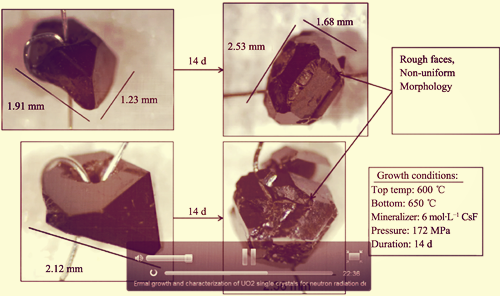
|
|
|
Preparation and Application of Boron Nitride Aerogels
LIU Fengqi, FENG Jian, JIANG Yonggang, LI Liangjun
2020 Vol. 35 (11): 1193–1202
 Abstract
Abstract(
1557 )
 HTML
HTML(
97)
 PDF
PDF(9236KB)(
2306
)
Boron nitride aerogel is a kind of new nanomaterials with three-dimensional porous network structure, which takes solid as the framework and gas as the dispersion medium. It has high specific surface area, high porosity, low density and other excellent properties. In addition, compared with graphene aerogels, it exhibits better insulation, oxidation resistance, thermal stability and chemical stability. These outstanding properties make it promising application in the fields of gas adsorption, catalysis, sewage purification, thermal insulation/conduction. This article systematically reviewed the preparation methods of boron nitride aerogels including the hard template method, soft template method, low-dimensional boron nitride assembly method, and template-free method in the light of domestic and foreign research status. Moreover, the important applications of boron nitride aerogels in key fields are summarized, and the future development direction is prospected.
|
|
|
Recent Progress of Halide Perovskite Radiation Detector Materials
MENG Gang, YE Yuqi, FAN Liming, WANG Shimao, GNATYUK Volodymyr, FANG Xiaodong
2020 Vol. 35 (11): 1203–1213
 Abstract
Abstract(
1155 )
 HTML
HTML(
87)
 PDF
PDF(21588KB)(
1686
)
Owing to high X/γ-ray absorption coefficient, high carrier mobility lifetime product, and low temperature solution growth, halide perovskites emerged as promising room temperature radiation detector materials, which outperform traditional high-purity Ge and CdZnTe materials in term of low-cost, chip compatibility and large-area imaging. Starting from the fundamental properties of halide perovskites and the principle of radiation detectors, the development of halide perovskite radiation detectors since 2015 was briefly introduced. Then, recent progresses of direct radiation detectors (intensity, imaging, energy spectroscopy) and indirect scintillator detectors were systematically reviewed, and the crucial factors for high-performance detectors were discussed, which could provide valuable guidance for further boosting performance of halide-perovskite-based radiation detectors in future.
|
|
|
EDTA Assistant Preparation and Gas Sensing Properties of Co3O4 Nanomaterials
TANG Danlei, JIA Lihua, ZHAO Zhenlong, YANG Rui, WANG Xin, GUO Xiangfeng
2020 Vol. 35 (11): 1214–1222
 Abstract
Abstract(
536 )
 HTML
HTML(
13)
 PDF
PDF(2712KB)(
834
)
Organic compounds can be used as additives to regulate the morphology and structure of materials in the process of nanomaterial synthesis, thereby affecting the catalytic and electrochemical properties of the materials. In this paper, the nanomaterial Co3O4 was synthesized by hydrothermal method using disodium ethylenediamine tetraacetate (EDTA-2Na) as the additives and cobalt acetate as the cobalt source, and its structure and gas sensing properties were measured. The relationship between structure and gas sensitive properties was studied, and the mechanism of EDTA-2Na in the synthesis of materials was discussed. The results show that the complex formed by Co2+ and EDTA2- regulates the growth direction of Co3O4 nuclei to generate the hexagonal nanosheets of Co3O4 with a side length of about 50 nm and a mesoporous structure. The response values of gas sensors fabricated by the Co3O4 nanomaterials to 100×10-6 toluene and 100×10-6 acetone are approximately 104 at 205 ℃ and 70 at 225 ℃, respectively. The high response of the gas sensor to volatile organic compounds (VOCs) is attributed to a large number of defects on the surface of Co3O4 synthesized by EDTA-2Na, which improve the adsorbed oxygen content. In addition, the mesoporous structure and large specific surface area are conducive to the adsorption, surface reaction and diffusion of VOCs. In this study, an effective method is proposed to obtain a highly responsive VOCs gas sensor by adding EDTA-2Na to synthesize Co3O4 nanomaterials.
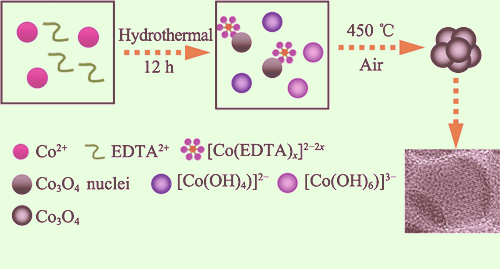
|
|
|
Magnetic Properties and Resistivity of Soft Magnetic Composites Regulated by SPS Enhanced Interface Reaction Mechanism
ZHAO Zhankui, LI Tao, LU Shuhan, WANG Minggang, ZHANG Jingjing, CHENG Daowen, WU Chen, CHI Yue, WANG Hongli
2020 Vol. 35 (11): 1223–1226
 Abstract
Abstract(
439 )
 HTML
HTML(
7)
 PDF
PDF(1256KB)(
747
)
The design trend of the insulating layer of soft magnetic composite materials (SMCs) is to consider both their soft magnetic properties and resistivity. In this study, using Fe/Ni0.5Zn0.5Fe2O4 composite system as an example, the influence of MnO2 oxidant on the soft magnetic properties and resistivity of the samples is studied, and the redox mechanism resulting from spark plasma sintering (SPS) at SMCs interface which improves the soft magnetic properties and resistivity is revealed. The Fe@Ni0.5Zn0.5Fe2O4(MnO2) core-shell composite powders with different amount of MnO2 (0, 0.1wt%, 0.3wt%, 0.5wt%, 1.0wt%) are prepared by ball milling, the Fe/Ni0.5Zn0.5Fe2O4(MnO2) bulk SMCs are prepared by SPS. Their structures are characterized by SEM and XRD, and their electromagnetic properties are tested by precise resistance tester and vibrating sample magnetometer. It is found that the resistivity of Fe/Ni0.5Zn0.5Fe2O4(MnO2) bulk SMCs with 0.5wt% MnO2 is 33.7% higher than that without MnO2, the saturation magnetic induction strength is 6.9% higher. The results show that the SPS sintering enhances the rapid REDOX reaction at the SMCs interface, and the addition of MnO2 oxidants changes the ions concentration of ferrite at the SMCs interface, shows multiple effects of simultaneously improving the soft magnetic properties and resistivity of SMCs, because it reduces the B-bit electron transition frequency, increases the effective Bohr magneton number, and improves the B-B magnetic superexchange.
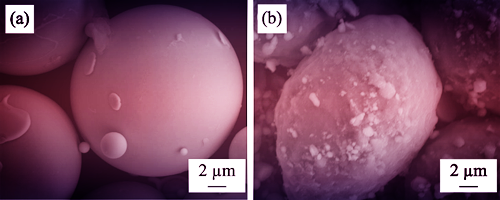
|
|
|
Tensile Behaviors and Matrix Cracking Mechanism of C/SiCN Composite Prepared by Precursor Infiltration Pyrolysis Method
LI Xuqin, TAN Zhiyong, CHENG Laifei, ZHOU Lingke, GAO Jian
2020 Vol. 35 (11): 1227–1233
 Abstract
Abstract(
593 )
 HTML
HTML(
13)
 PDF
PDF(3148KB)(
808
)
Significant matrix cracks and residual pores may form within ceramic matrix composite which was prepared by polymer infiltration and pyrolysis (PIP) method. Explore the matrix cracking mechanism and the crack evolution behavior would benefit the design and performance optimization of the composite. A spinning PIP process in vacuum was adopted to prepare mini C/SiCN composite without weak interphase. The tensile properties and the matrix crack evolution phenomena were analyzed. The influences of PIP cycles and heat-treatment temperatures were discussed. Results showed that the compositions are essentially the same for the samples heat-treated at 1000-1400 ℃. While the heat-treatment temperature rises to 1600 ℃, the precursor-derived SiCN matrix decomposes, with the carbon content decreased and SiC content increased significantly. As PIP cycles increased from 1 to 4, the average tensile strength of the composite increased by 14.19%, 38.83%, and 63.47%, respectively. The matrix crack spacing and crack opening distance gradually decreased, and the bonding between matrix and fiber was enhanced, leading to little fiber pull-out. When the heat-treatment temperature increased from 1000 ℃ to 1400 ℃, the tensile strength of the composite changed slightly. In contrast, when heat-treatment temperature roses to 1600 ℃, the SiCN matrix was transformed from amorphous SiCxN4-x tetrahedron structural units to SiC crystals. Then the matrix and the fiber debonded, resulting in their bonding strength weakened. As a result, the tensile strength of the C/SiCN composite decreased by 30.0%, due to a combined effect of interfacial debonding and fiber damage.
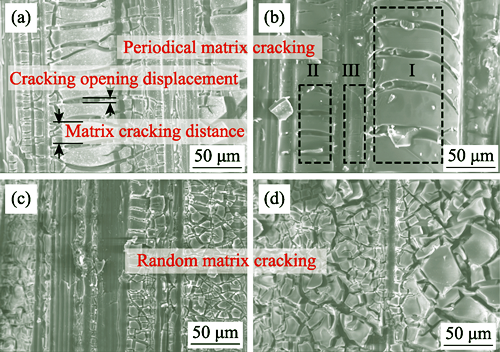
|
|
|
Mechanisms of Hydrogen Purification in a Graphene-like Carbon Nitride Separation Membrane
HOU Qi, WANG Maohuai, LIU Sen, DONG Hongbin, GUO Wenyue, LU Xiaoqing
2020 Vol. 35 (11): 1234–1238
 Abstract
Abstract(
438 )
 HTML
HTML(
10)
 PDF
PDF(3689KB)(
782
)
The purity of hydrogen, a renewable and efficient clean energy, has to be guaranteed in industry production. Membrane separation technology is an efficient approach. Herein, the hydrogen purification performance in a new type graphene-like carbon nitride (C9N4) membrane has been investigated by using density functional theory (DFT) and molecular dynamics (MD) simulation. Results of DFT calculations showed that gases were physically adsorbed on C9N4 membrane. C9N4 membrane exhibited considerably high permeability and excellent selectivity for H2. The permeance of H2 reached 1.89×10-5 mol∙m-2∙s-1∙Pa-1, and the selectivity of H2/CH4 reached 1024 at 300 K. Results of MD simulations also demonstrated that C9N4 membrane exhibited good hydrogen separation performance.
|
|
|
Fabrication of ZIF-8-NH2/Organosilica Hybrid Membranes for Pervaporation Desalination
ZHU Chunhui, XU Rong, REN Xiuxiu, ZUO Shixiang, GONG Genghao, ZHONG Jing
2020 Vol. 35 (11): 1239–1246
 Abstract
Abstract(
603 )
 HTML
HTML(
27)
 PDF
PDF(1560KB)(
1046
)
Industrial activities such as oil and gas drilling, power plant desulfurization and seawater desalination produce large amounts of high-salinity waste water. The effective treatment of the high-salinity waste water is the key to achieve zero liquid discharge. In the present study, ZIF-8-NH2/organosilica hybrid membranes were fabricated via the incorporation of ZIF-8-NH2 nanoparticles into BTESE-derived organosilica networks, using porous α-Al2O3 membranes as the supports. The as-prepared ZIF-8-NH2/BTESE hybrid membranes were applied to the desalination of high-salinity waste water by pervaporation. The effects of ZIF-8-NH2 content, feed temperature and feed concentration on desalination performances were systematically investigated. Compared with BTESE and ZIF-8/BTESE membranes, the amine-functionalized ZIF-8-NH2/BTESE hybrid membranes showed a simultaneous improvement in water permeance and salt rejection. In addition, the ZIF-8-NH2/BTESE hybrid membrane exhibited a high structural stability during the continuous pervaporation test up to 50 h, always delivering very high NaCl rejections of >99.95% and water permeances of >6.3×10-11 m3/(m2×s×Pa). Moreover, the NaCl rejection of the membrane was almost constant regardless of feed temperature and feed concentration, showing great promise as a highly efficient membrane for the application in the desalination of high-salinity water.
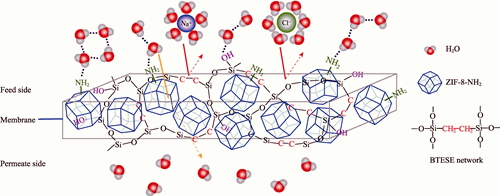
|
|
|
Preparation and Visible Light Photocatalytic Performance of BiOBr/Ti3C2 Composite Photocatalyst with Highly Exposed (001) Facets
LI Zhifeng, TAN Jie, YANG Xiaofei, LIN Zuhong, HUAN Zhenglai, ZHANG Tingting
2020 Vol. 35 (11): 1247–1254
 Abstract
Abstract(
602 )
 HTML
HTML(
34)
 PDF
PDF(1978KB)(
788
)
BiOBr/Ti3C2 composite photocatalyst with highly exposed (001) facets was synthesized by hydrolysis method. Different instruments were employed to characterize the samples. The visible light photocatalytic performance of different samples were evaluated by using Rhodamine B as the target pollutant. The results show that the degradation efficiency of Rhodamine B reaches 97.1% within 60 min over BiOBr/Ti3C2 (20.0wt% Ti3C2 addidion) composite photocatalyst, which is 34.7% higher than that of BiOBr. With the introduction of layered Ti3C2, the interface between BiOBr and Ti3C2 forms the Schottky junction energy barrier, which produces effective electron traps to inhibit the combination of photogenic electron-hole pairs, and greatly improves the visible light photocatalytic activity of BiOBr. After 5 cycles, the degradation efficiency of BiOBr/Ti3C2 composite photocatalyst remains 91.0%, showing reliable stability. The active species capture experiment shows that superoxide radical (•O2-) is the main active species in the photocatalytic degradation of Rhodamine B, and a possible photocatalytic mechanism is proposed accordingly.
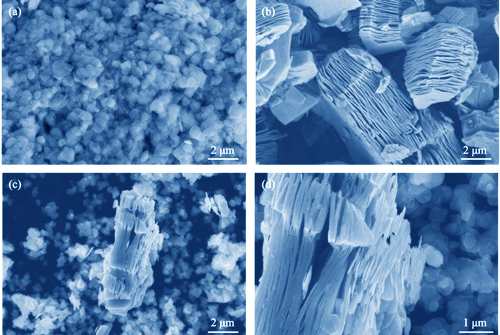
|
|
|
BiOBr-BN Photocatalysts for Promoting Photocatalytic NO Oxidation and Inhibiting Toxic By-products
ZHENG Qian, CAO Yuehan, HUANG Nanjian, DONG Fan, ZHOU Ying
2020 Vol. 35 (11): 1255–1262
 Abstract
Abstract(
827 )
 HTML
HTML(
30)
 PDF
PDF(5520KB)(
878
)
Photocatalysis has been regarded as an emerging and promising air purification technology. However, nitrogen dioxide (NO2) as the by-product is easily generated in the process of photocatalytic NO oxidation, which is more toxic and harmful to human health than NO. To inhibit the generation of NO2 and promote the deep oxidation of No into nitrate (NO3-), boron nitride (BN) nanosheets was used as templates and bismuth oxybromide (BiOBr) nanosheets were introduced by the in-situ growth method to fabricate the two dimensional-two dimensional (2D-2D) BiOBr-BN photocatalysts. After introducing the BN nanosheets, the thickness and diameter of BiOBr nanosheets greatly decrease. At the same time, the specific surface area of 5% BiOBr-BN increases nearly by 15 times compared with the pure BiOBr nanosheets, which could provide more active sites for the reaction. According to the photocatalytic NO removal tests, the composites present the higher photocatalytic activity than pure BiOBr nanosheets and BN nanosheets. Among them, 5% BiOBr-BN sample reveals the best NO removal rate of 39.5%, which is higher than that of pure BiOBr nanosheets (24.6%) under visible light irradiation. More importantly, the NO2 generation rate is suppressed from 16.4% to 7% and the oxidation selectivity of NO3- is increased from 36.6% to 81.5% compared with the pure BiOBr nanosheets. On the one hand, there is a strong interfacial interaction between BiOBr nanosheets and BN nanosheets, identifying by the X-ray Photoelectron Spectroscopy (XPS) and Density Functional Theory (DFT) results. Hence, 0.98 e electrons transfer from BiOBr to BN through the interface area, resulting in the formation of built-in electric field. Benefiting from this, the recombination of photogenerated charge carriers is effectively inhibited. On the other hand, BiOBr as the active surface enhances the adsorption of O2 and promotes its activation to superoxide radicals (•O2-), which is proved by DFT and Electron Spin Resonance (ESR) results. As a result, the generation of toxic by-product NO2 is effectively inhibited and NO can be directly oxidized into NO3-. These findings could provide a facial strategy for the design of 2D-2D photocatalysts and control of the separation of photo-generated electrons and holes.
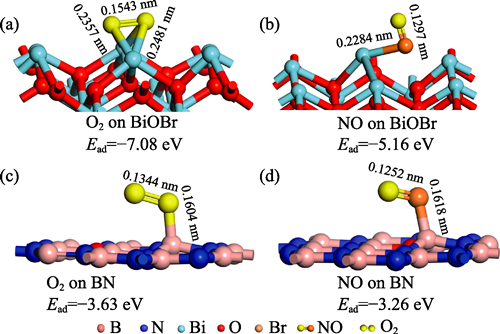
|
|
|
Room Temperature Magnetoresistance Property of Co-TiO2 Nanocomposite Film Prepared by Strong Magnetic Target Co-sputtering
CHEN Haoyu, ZHANG Yiwen, WU Zhong, QIN Zhenbo, WU Shanshan, HU Wenbin
2020 Vol. 35 (11): 1263–1267
 Abstract
Abstract(
394 )
 HTML
HTML(
3)
 PDF
PDF(631KB)(
614
)
Co-TiO2 nanocomposite film is a novel spin electron material with good biocompatibility, attracting wordwide attention in recent years. However, during the preparation process, the magnetic metal is exposed to the oxidizing atmosphere, which tends to form partial oxidation, thus affecting the properties of the tunnel magnetoresistance. In order to inhibit the oxidation of magnetic metal and improve the metal state, Co-TiO2 nanocomposite films were prepared by strong magnetic target co-sputtering. In this method, the strong magnetic target head has the characteristics of high magnetic field intensity and uniform distribution, which can significantly improve the sputtering particle energy and sputtering rate. This process could reduce the probability of oxidation caused by high energy particle collision during sputtering. Therefore, the method can inhibit the oxidation of metal Co, improve the spin polarizability of nanocomposite films. The Co-TiO2 nanocomposite film is mainly composed of amorphous TiO2 matrix and dispersed Co particles. By adjusting the particle size and distribution of Co particles, the electrical properties of the films show the transition from metal state to insulated state. Moreover, the magnetic properties of the films show the transition from ferromagnetic state to superparamagnetic state. When the Co content is 51.3at%, the Co-TiO2 nanocomposite films exhibit high metal state and high resistivity, and room temperature tunneling magnetoresistance up to 8.25%. By strong magnetic target co-sputtering, the room temperature magnetoresistance performance is improved in Co-TiO2 nanocomposite films, which is valuable for the study of magnetic metal-oxide nanocomposite films.
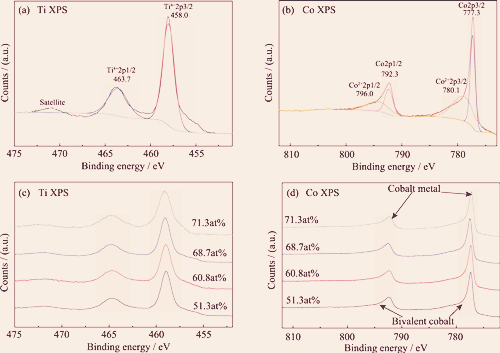
|
|
|
Controllable Preparation and in Vitro Bioactivity of Bioglass Microspheres via Spray Drying Method
HU Yaping, TIAN Zhengfang, ZHU Min, ZHU Yufang
2020 Vol. 35 (11): 1268–1276
 Abstract
Abstract(
466 )
 HTML
HTML(
22)
 PDF
PDF(17136KB)(
985
)
The CaO-SiO2-P2O5 bioglass (BG) microspheres with good bioactivity and osteoconductivity have been extensively studied for bone tissue engineering. Traditional melting method for preparing BG powders is high energy consumption, and difficult to control the morphology of BG. While Sol-Gel technique for BG preparation requires a large amount of organic solvent, long preparation period and low mass production. For the rapid and scalable preparation of BG microspheres with controllable morphology, particle size and chemical composition, an efficient strategy of spray drying of precursor solution was proposed in this study, and the effects of process parameters including inlet air volume, precursor solution concentration and feed rate on the particle size of BG microspheres, and the effect of chemical composition on the apatite formation ability of BG microspheres in vitro were investigated. The results showed that the particle sizes of BG microspheres via spray drying could be controlled below 40 μm, and the particle sizes of BG microspheres increased with the concentration of precursor solution, and decreased with the increase of inlet air volume, but the feed rate has a slight effect on the particle size of the microspheres. On the other hand, BG microspheres with different chemical compositions had good ability to induce apatite formation in vitro, and it increased with the increase of CaO content. Therefore, spray drying method would be promising for rapid and scalable preparation of BG microspheres.
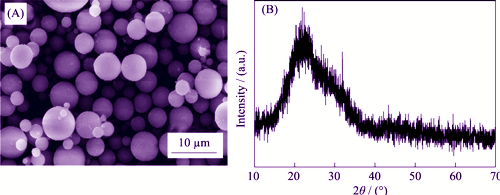
|
|
|
Injectable Magnetic Liquid-solid Phase Transition Material for MR Imaging and Low-temperature Magnetocaloric Therapy of Osteosarcoma
XU Dong, ZHU Yufang, ZHENG Yuanyi, LUO Yu, CHEN Hangrong
2020 Vol. 35 (11): 1277–1282
 Abstract
Abstract(
503 )
 HTML
HTML(
9)
 PDF
PDF(5053KB)(
622
)
Overhigh temperature can induce inflammation and heat radiation damage to normal tissues around the tumor. Therefore, the development of a magnetic material that can achieve high mortality of tumor cells at relatively low temperatures (e.g. 43 ℃) is critical for the clinical application of magnetocaloric therapy. This study focuses on the goal of low-temperature, safe, and effective magnetic thermotherapy. The liquid-solid phase transition material polylactic acid-glycolic acid (PLGA) approved by the FDA, is selected as raw material and superparamagnetic iron oxide nanoparticles prepared by a one-step mild reduction method are loaded to achieve magnetic resonance imaging and magnetic heating. Meanwhile, a small molecule inhibitor of heat shock protein HSP90, i.e, epigallocatechin gallate (EGCG), encapsulated in PLGA, could inhibit the body’s thermal protection function and achieve the purpose of killing tumor cells at lower temperatures. In vitro results indicated that the prepared superparamagnetic iron oxide nanoparticles not only have good T2-weighted imaging performance, but also show excellent magnetothermal transformation performance. More details, when the obtained PLGA/Fe3O4/EGCG biocomposite was controlled to heated up to 43 ℃ for 40 min under an alternating magnetic field, around 70% of tumor cell could be killed, exhibiting promising potential for low-temperature magnetothermal treatment of tumor. Such novel injectable magnetic thermal phase transition material may provide new idea and material support for the treatment of osteosarcoma.
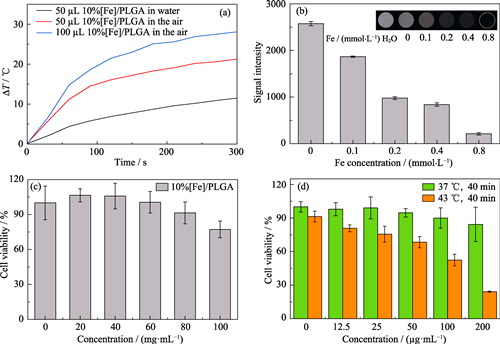
|
|
|
Strontium Doped Hydroxyapatite Nanoparticles: Synthesis, Characterization and Simulation
ZHOU Zihang, WANG Qun, GE Xiang, LI Zhaoyang
2020 Vol. 35 (11): 1283–1289
 Abstract
Abstract(
471 )
 HTML
HTML(
35)
 PDF
PDF(4791KB)(
778
)
Strontium (Sr) doped hydroxyapatite (HA) has been widely used in diverse biological applications. In this work, hydrothermal synthesis method was used to prepare HA and Sr doped HA nanoparticles. A series of experimental methods and the simulation method based on density functional theory (DFT) were used to investigate the effect of Sr doping on chemical composition, crystallinity, lattice parameters, morphology, and formation energies of HA. The experimental results indicated that the lattice parameters and crystal size of Sr doped HA nanoparticles increased. The crystallinity of Sr doped HA nanoparticles did not change significantly with the increasing concentration of Sr ions. The lattice parameters obtained by the simulation method were in good agreement with the experimental results. The formation energies indicated that Sr ion doping endowed the structure more stable, which also illustrated that the Ca(1) site was the preferential site for Sr doping at 10at% and mixed doping was a more preferred doping mode at 50at%.
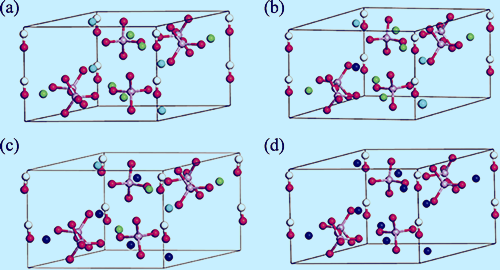
|
|
|
First-principles Study on Mg Doping in Cu2ZnSnS4
SUN Ding, DING Yanyan, KONG Lingwei, ZHANG Yuhong, GUO Xiujuan, WEI Liming, ZHANG Li, ZHANG Lixin
2020 Vol. 35 (11): 1290–1294
 Abstract
Abstract(
432 )
 HTML
HTML(
9)
 PDF
PDF(712KB)(
599
)
To date, solar cells with efficiency of 12.6% has been demonstrated via a hydrazine-based solution approach. Despite this progress, performance of Cu2ZnSn(S,Se)4 solar cells remains far lower than the Shockely- Quiser theoretical limit. We performed density functional theory calculations with hybrid functional approach to investigate the Mg-related defects in the kesterite structure of the Cu2ZnSnS4 (CZTS) solar cell material. The substitution energies of Mg atom in CZTS were calculated in consideration of the atomic chemical potentials of the constituent elements of Cu, Zn, Sn, and the doping atom of Mg. From our calculation results, Mg doping in CZTS under certain Sn-rich growth condition is expected to convert the conduction from p-type to n-type. The present study provides a theoretical basis for exploring practical applications of Mg doping in CZTS solar cells.
|
|